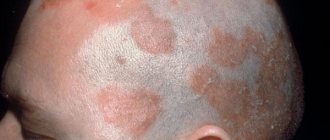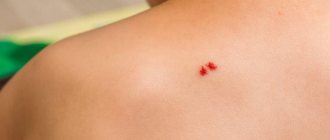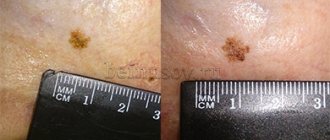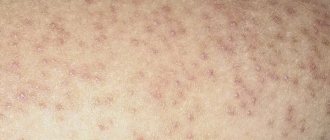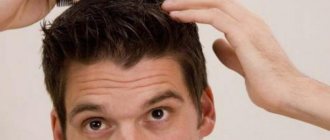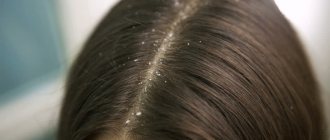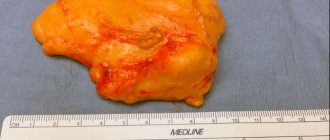The appearance of a lump on the back of the head is a direct indication for a visit to the doctor. The formation is often the result of injury and the formation of a hematoma in the soft tissues. It may also be a tumor, a manifestation of an inflammatory process, or a skin reaction to an irritant. In some cases, the problem not only causes discomfort, but also poses a health hazard. If the lump appears for no apparent reason, gradually increases in size or is very painful, it is better not to hesitate, but to urgently seek help. It is best to avoid taking medications, topical medications, or physical therapy until a diagnosis is made.
Causes of lumps
Bumps appear on the head not only after blows. Experts identify dozens of reasons for the formation of conglomerates of various sizes, consistency, and appearance. Their occipital localization deserves special attention due to the abundance of blood vessels and nerve endings in the area and the increased risk of injury to the area.
The main reasons for the appearance of bumps on the back of the head:
- a skin reaction is the result of an insect bite or the use of inappropriate hair cosmetics. It can be a small bump or a large swelling, which depends on the cause and the reactivity of the body;
- trauma – a consequence of rupture of blood vessels in a small area and the formation of a hematoma;
- tumor - a benign or malignant formation of subcutaneous or intradermal localization. Such cones can have different appearance, character, shape, and consistency. Each has its own specifics and requires specific treatment;
- enlarged lymph nodes – when an infection enters the body or inflammation develops, the lymph nodes begin to work more actively, which is why they increase in size. Sometimes they become so swollen that they rise above the surface of the skin;
- inflammatory diseases - boils on the head are not uncommon for people who do not care about their health and neglect the rules of personal hygiene. Purulent-necrotic lesions of the soft tissues around the hair follicle can take on the appearance of a large and painful swelling.
Even a hard lump that appears on the back of the head after a blow deserves a specialist’s assessment. You should not wait for the formation to resolve on its own. It is better to immediately visit a doctor, make sure there is no danger to health, and begin therapy.
Types of Skull Protrusions Based on Characteristics
Lumps on the back have certain characteristics by which they are classified.
They may have the following characteristics:
- Big or small
- Soft or hard
- One or more
- Fixed or movable
- Inflamed or not inflamed
Each of these masses is created for reasons that in many cases are not a cause for concern. But as a rule, if you suddenly develop a lump or sore in your head that is painful or misshapen in appearance, you will need to see a doctor to get it treated.
Types of tumors on the head and their signs
A lump on the back of the head may be small in size and not cause discomfort, but at the same time pose a danger to human health. On the Internet you can find a lot of information about what kinds of soft tissue tumors there are, how to deal with them at home with the help of medications or traditional medicine. The use of such approaches poses serious dangers. Even if the problem can be resolved, there is no guarantee that it will not return. Also, health care workers often send tumors for additional study to rule out the possibility of cancer.
Hemangioma
One of the most dangerous types of neoplasms. It can occur on any part of the head, including the back of the head. Appears against the background of a malfunction of the blood vessels. It looks like a bright crimson or purple bulge with clear edges; on its surface you can see the vascular network. The conglomerate can cause disruption of the trophism of the tissues surrounding it. It also tends to grow to impressive sizes and degenerate into a malignant form. Treatment is carried out strictly under the supervision of a surgeon or oncologist. Most often, surgical removal of the hemangioma is required, after which the biomaterial is sent for histology.
Allergic reaction
Swelling on the skin of the back of the head can occur as a result of the influence of an allergen on the body.
The danger is posed by aggressive cosmetics, household chemicals, hats and synthetic bedding. In this case, the formations are usually small in size, numerous, do not hurt, but itch. Therapy consists of eliminating exposure to the allergen on the body, using antihistamines, and strengthening the patient’s immunity. A special place in this group of causes is occupied by an insect bite. Bees, flies, and mosquitoes can provoke a violent reaction of the body in the form of severe swelling of soft tissues. Typically, these bumps are painful, hot to the touch, and itchy. When pressing on the bite site, a clear liquid or exudate may be released. It is better not to self-medicate, especially if it is not known who bit. We cannot exclude the possibility of the presence of a tick that has crawled under the skin, and only a doctor can get rid of it.
Fibroma and sarcofibroma
Fibroma is a benign tumor, the basis of which is connective tissue. Its danger lies in its ability to grow to impressive volumes and turn into a malignant analogue - sarcofibroma. Initially, formations appear against the background of endocrine disorders, metabolic disruptions, and hormonal changes in the body. The lump itself is hard to the touch and does not cause any discomfort. It only hurts when there is mechanical damage. Treatment of fibroids involves monitoring its growth by an oncologist. If the tumor grows quickly or is in the way due to its location, it is removed.
Lipoma (fat) on the head
A benign tumor often appears in women after 30 years of age. This is facilitated by frequent changes or disturbances in hormonal levels and problems with fat metabolism. The formation is soft, mobile, round in shape, does not hurt when pressed and rarely bothers you. When located at the back of the head, it can cause discomfort due to frequent use of a comb, wearing a headdress, or simply the presence of an aesthetic defect. The treatment method is selected by the doctor depending on the size of the lump and its growth rate. This can be excision of the mass, its removal with a laser, or the introduction of a conglomerate of special anti-lipid drugs into the body.
Pimples and bites
Such bumps are rarely isolated. Most often, they appear unexpectedly, do not reach significant volumes, and go away on their own within 4-7 days. Usually the formations are itchy - scratching leads to infection and inflammation. In this case, the discomfort increases, and the local temperature may rise. In the absence of care or weak immunity, an abscess forms. You can try to deal with such bumps yourself by regularly treating the affected area with an antiseptic. If the condition worsens or there is no effect within 2-3 days, it is recommended to consult a doctor.
Bruise or injury
A blow to the head is the most common cause of a bump. Typically, such consequences of injury do not cause serious problems and do not require special treatment. It is enough to apply cold to the sore spot as soon as possible and leave the compress for a quarter of an hour.
A doctor's help is necessary if:
- nausea and vomiting occurred;
- the child has a problem;
- after the blow there was loss of consciousness;
- there is dizziness or signs of incoordination;
- the temperature has risen.
You will learn about methods for eliminating headaches after a blow from this article.
A small hematoma will go away on its own in 3-5 days. To speed up the process, you can use “Troxevasin”, “Rescuer”, “Troxerutin”, and heparin ointment. All these products are good at relieving swelling, stimulating the resorption of bruises, restoring blood vessels, and eliminating pain.
Wart on the head
The most common benign tumor, which is equally often diagnosed in people of different ages, gender, and social status. Most often it occurs in people with impaired metabolism, against a background of stress, when tissues are damaged by an inflammatory process or their frequent mechanical irritation. A wart on the head is rarely dangerous, but is an aesthetic defect. The bumps can take on different appearances, reach significant sizes, and spread over the surface, occupying a large area of the skin. Treatment must be coordinated with a dermatologist.
Atheroma on the head
The formation looks like a lipoma, but has a yellowish tint. It appears due to disruption of the sebaceous glands and blockage of their ducts. A dense lump with a smooth surface begins to cause pain and significant discomfort as it grows. The tumor must be removed surgically or using a laser. The resulting material is sent for histology, but it rarely contains cancer cells.
Possible symptoms of a concussion
- Brief confusion or loss of consciousness. With a strong blow, the moment of injury disappears from memory.
- Dizziness even at rest, and when turning, bending or other changes in body position, the symptom intensifies.
- Severe headache, nausea and vomiting.
- Double vision, inability to concentrate on one point.
- Increased sensitivity to light and sounds.
- Impaired coordination of movements.
- Reaction inhibition - the victim gives an answer to the question after some time.
- Pale skin, weakness, sweating.
Important! A concussion is not always accompanied by visible head injuries, so the absence of wounds does not exclude brain injury.
Features of bumps on children's heads
In childhood, bumps on the back of the head in most cases are the result of injury. Even newborn babies are not immune from them - the soft tissues of the head are damaged during the process of passing through the birth canal. Typically, such bumps do not require special treatment, but it is better to consult a doctor.
Also, the appearance of swelling on the back of a child’s head may indicate inflammation and enlargement of the lymph nodes. Children are not immune from wen. They occur in childhood due to disruption of the sebaceous glands or ignorance of basic rules of personal hygiene. The likelihood of a malignant tumor or precancerous condition forming in a child is small, but it cannot be excluded.
Classification
Classification by tissue from which tumor formation occurs:
- Fatty – liposarcoma;
- Muscular:
- striated muscle tissue - rhabdomyosarcoma,
- unstriated muscle tissue – leiomyosarcoma;
- Vessels:
- circulatory – hemangiosarcoma,
- lymphatic – linfangiosarcoma;
- Connective – fibrosarcoma;
- Synovial membrane – synovial sarcoma;
- Nervous – neurogenic sarcoma;
- Skin – fibrosarcoma.
Which doctor should I contact?
If bumps appear on your head, it is recommended to first visit a therapist. The doctor will conduct an initial examination, collect anamnesis and refer you to a specialist. If a formation on the head appears after a blow, then you can initially go to a traumatologist.
Surgeons treat boils and most tumors that need to be removed. When there is a suspicion that a tumor is malignant, oncologists are involved in the work. If the lymph nodes are enlarged, ENT intervention is required. Bumps that occur after contact with an allergen or an insect bite are monitored by an allergist. In the latter case, an infectious disease specialist can be involved in the diagnosis. A dermatologist works with warts and pimples.
Classic buns
We recommend starting your training with the standard and most common method, on the basis of which different hairstyle variations will subsequently be formed.
- After dividing your hair with an even parting into rugs, tie two ponytails symmetrically. Like in picture 3.
- Backcomb each one a little and spray with hairspray. Those girls who have voluminous hair can skip this step.
- Twist two bundles around the elastic band and secure with bobby pins and hairpins.
The strands released at the forehead will ideally complement the image. Especially if during styling you slightly stretch the strands near the ponytails.
Diagnosis of the disease
Often, the clinical picture alone is sufficient to make a diagnosis and determine a treatment regimen. In some cases, the use of additional diagnostic techniques is still required. In particular, they are necessary to clarify the nature of the tumor and exclude its malignant nature.
To determine the nature of the lump, you may need to undergo the following procedures:
- general blood and urine tests - aimed at identifying an infectious or inflammatory process;
- blood biochemistry - allows you to identify problems with metabolism and suspect oncology;
- the use of tumor markers is an informative method for detecting cancer;
- X-ray or CT scan of the skull - help assess the condition of the bones of the skull, exclude their fractures, the presence of cracks;
- Ultrasound – aimed at studying the structure of the lump, its composition and the depth of penetration into the tissue;
- histology – studies the cellular structure of the biomaterial, which allows you to quickly make a diagnosis;
- A biopsy is another way to examine tissue for cancer.
Based on the diagnostic results, the optimal treatment method is selected. If necessary, the procedures are repeated several times, which makes it possible to evaluate the effectiveness of the treatment.
Tips and life hacks from professionals: how to tie your hair into a bun
Follow the advice of stylists to make your hairstyle last longer and look more impressive.
- If you create a cone from strands or braids, then the following rule applies: the more there are, the more voluminous the cone
. - For the most voluminous bun and bump, use a roller or donut, also known as a donut
. The size of the beam will depend on its size. A high and sleek big bun can look old-fashioned, so don't go for one that's too big. - For long hair, you can make a bump from one strand
, spreading it over the tail. - Accessories
that work well for evening looks include bright hairpins, hairpins, a comb or Japanese/Chinese chopsticks. - The fastest way
is to thread your ponytail into a donut and wrap your hair around it; you can braid one strand into a pigtail. - For volume, you can first use mousse or texturizing spray
.
Treatment of cones
Methods for dealing with bumps on the back of the head are selected individually and depend on the causes of the problem. Treatment options can be very different, and for different diagnoses they give different results. It is extremely important not to self-medicate. Applying heat to a boil will aggravate its course, and combating the consequences of the injury with cold a day after receiving it will slow down the healing process. You should not be afraid of surgical treatment if a specialist insists on it. Sometimes this is the fastest, safest and most effective option for eliminating a lump. Today, laser and cryotherapy are increasingly used to remove tumors. They are able to destroy the formation without compromising the integrity of the skin.
A hard lump on the back of the head does not always pose a danger to human health and life, but it can cause significant discomfort. You should not delay treatment even in cases where the formation does not bother you. Accidentally touching it can damage the integrity of the skin and introduce an infection into the wound. The close location of the abscess to the brain threatens damage to the membranes and substance of the organ. This can lead to serious complications, including death.
Forecast
The prognosis for soft tissue sarcomas of the head and neck largely depends on the size of the tumor, primary location, etiology, and the presence of local or distant secondary foci of malignancy. With early diagnostic measures and adequate timely therapy, the prognosis is favorable.
Bibliography:
- NCCN Guidelines for Patients: Soft Tissue Sarcoma, 2022.
- Shah. Head and Neck Surgery and Oncology 5 ed., 2022.
- Soft tissue sarcomas: a guide for patients – Information based on ESMO Clinical Practice Guidelines – v.2016.1
- Fedenko A. A., Bokhyan A. Yu., Gorbunova V. A., Makhson A. N., Teplyakov V. V. Practical recommendations for drug treatment of soft tissue sarcomas. Malignant tumors: Practical recommendations RUSSCO #3s2, 2022 (volume 9). pp. 272–282.
Ponytails
A mischievous option for the brave and daring. Suitable for little fashionistas and visiting kindergarten. This type of bun is easy to make. Just when making the ponytail on the last turn, the elastic band should not pull out the hair completely, but leave it bent at the same distance on both sides, stretch it a little like a fan, and then wrap the rest of the curls around and pin it with hairpins.
There is the same version of beams, only from below.
Baby buns
Any child requires attention. Especially girls with their constant hairstyles and styling. Every mother dreams of spending no more than a minute on this process, especially when it comes to the morning. In this case, the bundles on the sides come to the rescue. They are easy to do, and they look perky and cute.
Ideas and non-standard solutions with two beams
The main stages of performing such a hairstyle have been studied, it’s time to plunge into the world of fantasy and new ideas that will help make the image bold and unique.
Color base
Blondes and redheads can dye their hair in bold shades; brunettes and dark-skinned girls should either lighten their hair first or use a coloring varnish.
Zigzag parting
How to add variety if buns have become an everyday hairstyle? Try a zigzag parting.
Accessories
Add unusual jewelry to your look. They will not make styling heavier, but will simply become a unique highlight.
Bows
Cute ribbon bows are easy to make. No additional instructions are required.
Curls
If you have gorgeous hair, you won’t have to backcomb it; you just need to not pull the ponytail out of the elastic all the way.
Deliberate negligence
The released strands on the face go perfectly with any type of coloring.
Straight bangs
Horns
The special shape of the beams, pointed upward, creates a similarity with its loud name. The execution itself is no different from previous master classes, except for one nuance.
The hairstyle uses two elastic bands for each ponytail, which are wound in height, creating a strong rod for the entire structure. The remaining stages can be seen in step-by-step photos.
Buns-braids
This option is useful for business meetings and visits to the office, school or institute. The highlight of the execution is turning the ponytail inward under the elastic band (photos 3, 4 and 5). Then they braid the braid and wrap it around the resulting tubercle.
The braid bun on top follows the same pattern, but the purpose of the hairstyle changes its character to a more frivolous one: walks with friends, picnics and children's parties.
Low Bun Buns
After the standard division of the hair on the sides, a tourniquet is made with grabs along the edge of its growth. Then the strand is twisted in a spiral and secured with an elastic band, bobby pins and hairpins.
The design exists in several versions - tight and relaxed bundles.

